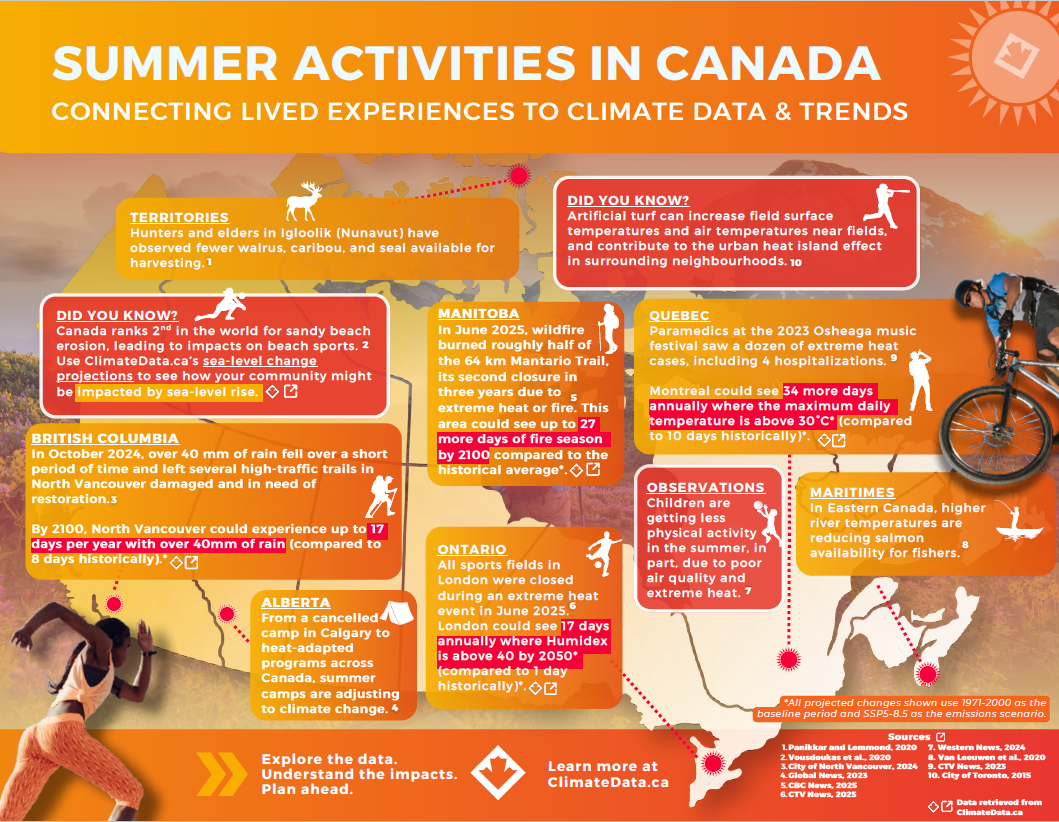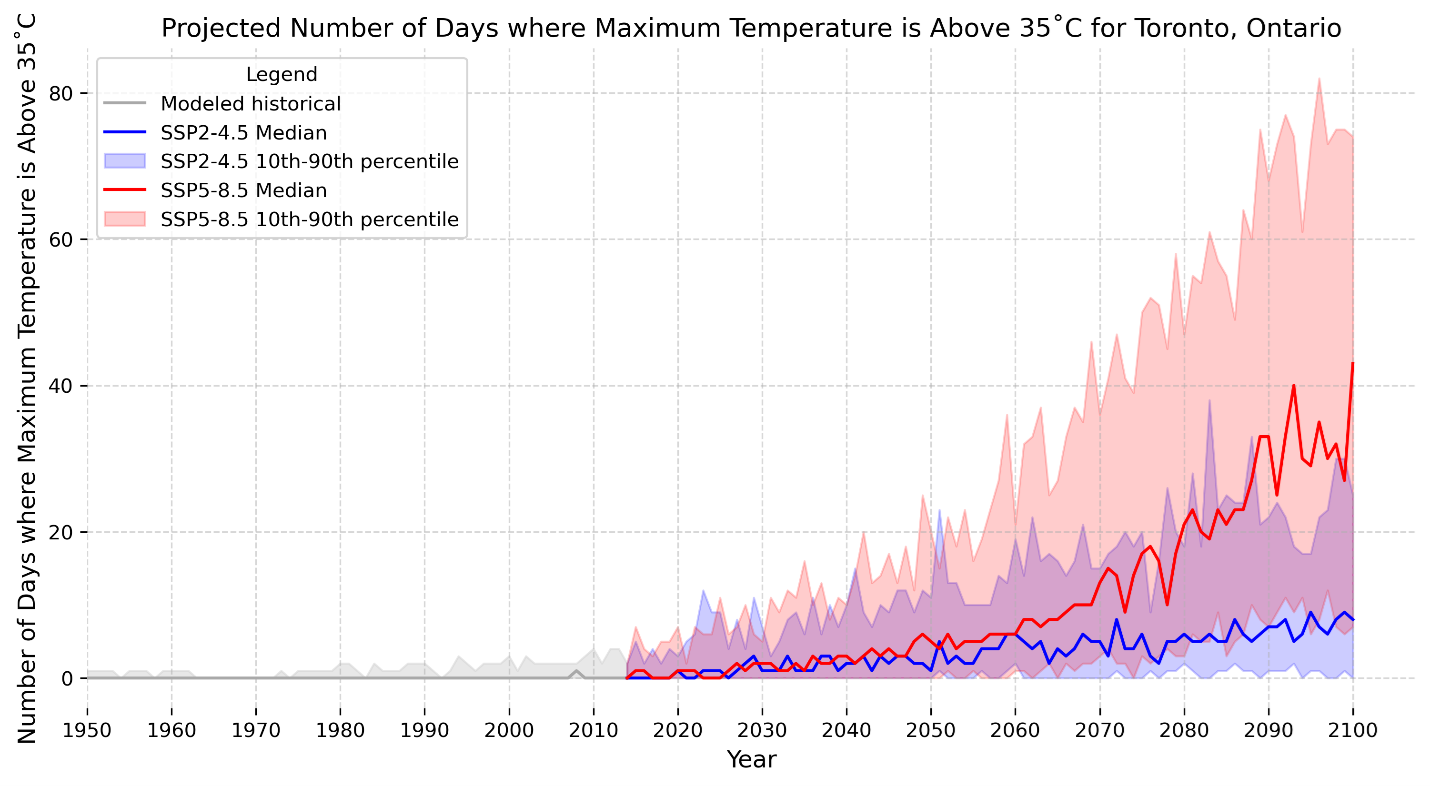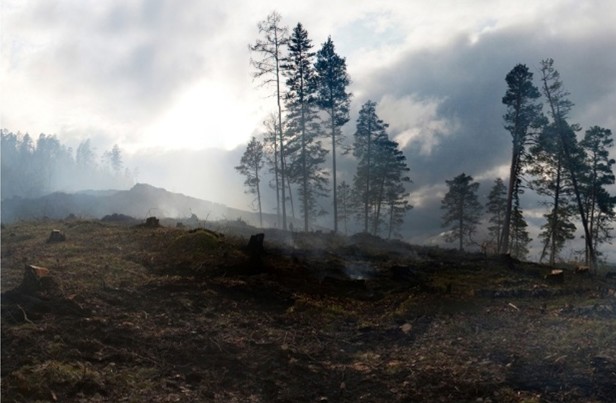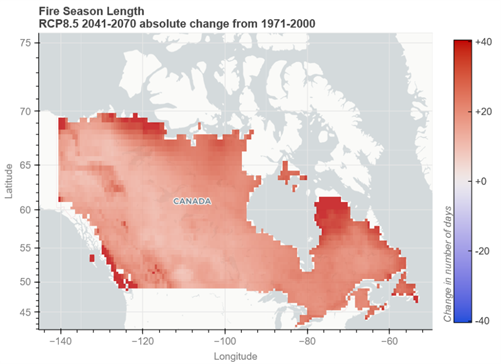Extreme Rainfall, Coastal Storms, and Coastal Trail Damage
As the climate warms, so too does the potential for larger, more powerful storms. In Atlantic Canada, there is concern that warmer sea-surface temperatures could lead to more powerful hurricanes. These hazards, combined with rising sea levels, can pose additional risks to outdoor recreation trails.
One recent example was Hurricane Fiona in September 2022, which struck Eastern Canada as a powerful post-tropical cyclone, bringing record-breaking rainfall and storm surges. Parts of Nova Scotia, Prince Edward Island, New Brunswick, and Newfoundland saw 50 to 200 mm of rain within 24 hours, causing severe flooding.
Along the coast, storm surge waves over 3 m high pounded the shore. Sections of the Cabot Trail in Cape Breton were washed out or buried by landslides, multiple parks and campgrounds were forced to close, and coastal trails experienced significant beach and soil erosion. Governments had to invest tens of millions of dollars to rebuild damaged roads, bridges, and trail sections – for example, over $40 million was allocated to repair infrastructure in Cape Breton Highlands National Park and surrounding areas.[6] One iconic seaside footpath, the Louisbourg Lighthouse Trail, required about $158,000 in emergency repairs and renovations funded by the province.[7]
Hurricane Fiona underscored how compound climate extremes can overwhelm trail systems: heavy precipitation plus rising sea levels and strong winds can lead to destructive flooding. Climate change is expected to make such events more likely. Warmer ocean and air temperatures are already yielding rainier and windier hurricanes, and storms are tracking further north than before.[8] [9] Future projections indicate these trends will continue, meaning Atlantic Canada must brace for more frequent high-impact storms (see Box 2).













